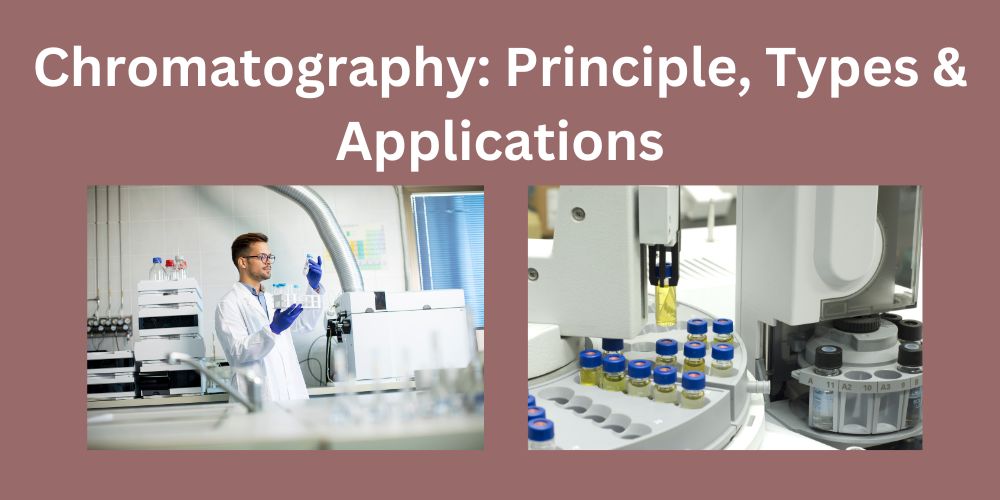Chromatography is a versatile and essential technique in the scientific world. It is a pivotal technique of separating mixtures into their constituent parts. This method has revolutionized research and analytical fields by offering precise separation, identification, and purification capabilities. It caters to several industries, starting from pharmaceuticals to environmental science, underscoring its significance and versatility.
Chromatography Definition
To the core, chromatography is a physical method that separates the components from a mixture and distributes them between two phases – a stationary phase and a mobile phase. The mobile phase flows though the stationary phase, where it carries the components of the mixture with it. Different components travel at different pace, which leads to their separation in the process.
Principles of Chromatography
The basic principle behind the chromatography is based on the differential partitioning between the mobile and the stationary phases. Components of a mixture are first separated due to the differences in their speed of movement through the stationary phase under the influence of the mobile phase as stated by experts, LCGC India.
Depending on the polarity of components, they spend more or less time interacting with the stationary phase and hence are then retarded to greater or lesser extent. The unique affinity of each component towards the phases ensures effective separation. And this leads to effectively separate different components that are present in the sample.
Types of Chromatography
Chromatography process can be carried on in different forms like the following:
– Liquid Chromatography (LC): This uses a liquid mobile phase of the sample for separation of components that are soluble in liquid.
– Gas Chromatography (GC): This uses a gas as the mobile phase of the sample for separation. It is ideal for volatile and gaseous substances.
– Thin Layer Chromatography (TLC): This is a quick and simple technique, where the stationary phase is coated on a glass plate.
– High-Performance Liquid Chromatography (HPLC): This is an advanced form of liquid chromatography where there is high resolution and sensitivity.
– Ion Exchange Chromatography: This method is used for separating ions and polar molecules based on their charge.
– Size Exclusion Chromatography: In this method, the molecules are separated by size, which allows smaller molecules to pass through more readily.
Applications of Chromatography
The applications of chromatography methods are diverse and huge. The various aspects of scientific research and industrial processes are:
– Pharmaceutical Industry: It uses the process for the purification and analysis of raw materials, monitoring the production processes, and quality control of the final products.
– Environmental Monitoring: Chromatography is also used for detecting pollutants and toxic substances in air, water, and soil.
– Food and Beverage Industry: Chromatography is used for analyzing the food products for quality control, nutritional value, and the presence of contaminants.
– Forensic Science: these methods also help in drug identification, toxicology tests, and analysis of fibers and their residues in criminal investigations.
– Biotechnology: Along with the above, chromatography is also used in purifying proteins and nucleic acids for research and medical use.
Conclusion
Chromatography is a widely used cornerstone technique that enables a clear separation, identification, and purification of components within a mixture. All its principles and varied methodologies offer flexibility to different industries. From advancing the drug discovery to ensuring safety of food products, chromatography continues to play a pivotal role in driving innovation along with ensuring quality in real world.



